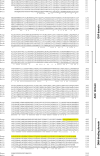Rhodobacter capsulatus AnfA is essential for production of Fe-nitrogenase proteins but dispensable for cofactor biosynthesis and electron supply
- PMID: 32207246
- PMCID: PMC7294313
- DOI: 10.1002/mbo3.1033
Rhodobacter capsulatus AnfA is essential for production of Fe-nitrogenase proteins but dispensable for cofactor biosynthesis and electron supply
Abstract
The photosynthetic α-proteobacterium Rhodobacter capsulatus reduces and thereby fixes atmospheric dinitrogen (N2 ) by a molybdenum (Mo)-nitrogenase and an iron-only (Fe)-nitrogenase. Differential expression of the structural genes of Mo-nitrogenase (nifHDK) and Fe-nitrogenase (anfHDGK) is strictly controlled and activated by NifA and AnfA, respectively. In contrast to NifA-binding sites, AnfA-binding sites are poorly defined. Here, we identified two highly similar AnfA-binding sites in the R. capsulatus anfH promoter by studying the effects of promoter mutations on in vivo anfH expression and in vitro promoter binding by AnfA. Comparison of the experimentally determined R. capsulatus AnfA-binding sites and presumed AnfA-binding sites from other α-proteobacteria revealed a consensus sequence of dyad symmetry, TAC-N6 -GTA, suggesting that AnfA proteins bind their target promoters as dimers. Chromosomal replacement of the anfH promoter by the nifH promoter restored anfHDGK expression and Fe-nitrogenase activity in an R. capsulatus strain lacking AnfA suggesting that AnfA is required for AnfHDGK production, but dispensable for biosynthesis of the iron-only cofactor and electron delivery to Fe-nitrogenase, pathways activated by NifA. These observations strengthen our model, in which the Fe-nitrogenase system in R. capsulatus is largely integrated into the Mo-nitrogenase system.
Keywords: Rhodobacter; AnfA; Fe-nitrogenase; Mo-nitrogenase; NifA.
© 2020 The Authors. MicrobiologyOpen published by John Wiley & Sons Ltd.
Conflict of interest statement
None declared.
Figures






Similar articles
-
NifA is the master regulator of both nitrogenase systems in Rhodobacter capsulatus.Microbiologyopen. 2019 Dec;8(12):e921. doi: 10.1002/mbo3.921. Epub 2019 Aug 22. Microbiologyopen. 2019. PMID: 31441241 Free PMC article.
-
Promoters controlling expression of the alternative nitrogenase and the molybdenum uptake system in Rhodobacter capsulatus are activated by NtrC, independent of sigma54, and repressed by molybdenum.J Bacteriol. 1996 Apr;178(7):2010-7. doi: 10.1128/jb.178.7.2010-2017.1996. J Bacteriol. 1996. PMID: 8606177 Free PMC article.
-
Proteome Profiling of the Rhodobacter capsulatus Molybdenum Response Reveals a Role of IscN in Nitrogen Fixation by Fe-Nitrogenase.J Bacteriol. 2015 Dec 7;198(4):633-43. doi: 10.1128/JB.00750-15. J Bacteriol. 2015. PMID: 26644433 Free PMC article.
-
Regulation of nitrogen fixation in the phototrophic purple bacterium Rhodobacter capsulatus.J Mol Microbiol Biotechnol. 2002 May;4(3):243-8. J Mol Microbiol Biotechnol. 2002. PMID: 11931554 Review.
-
Nitrogen and molybdenum control of nitrogen fixation in the phototrophic bacterium Rhodobacter capsulatus.Adv Exp Med Biol. 2010;675:49-70. doi: 10.1007/978-1-4419-1528-3_4. Adv Exp Med Biol. 2010. PMID: 20532735 Review.
Cited by
-
A Red Fluorescent Protein Reporter System Developed for Measuring Gene Expression in Photosynthetic Bacteria under Anaerobic Conditions.Microorganisms. 2022 Jan 18;10(2):201. doi: 10.3390/microorganisms10020201. Microorganisms. 2022. PMID: 35208656 Free PMC article.
-
PII protein is essential for transcriptional regulation of anf gene cluster for iron-only nitrogenase in Rhodopseudomonas palustris.Appl Environ Microbiol. 2025 May 21;91(5):e0046525. doi: 10.1128/aem.00465-25. Epub 2025 Apr 10. Appl Environ Microbiol. 2025. PMID: 40207968 Free PMC article.
References
-
- Austin, S. , & Lambert, J. (1994). Purification and in vitro activity of a truncated form of ANFA. Transcriptional activator protein of alternative nitrogenase from Azotobacter vinelandii . Journal of Biological Chemistry, 269, 18141–18148. - PubMed
-
- Barrios, H. , Grande, R. , Olvera, L. , & Morett, E. (1998). In vivo genomic footprinting analysis reveals that the complex Bradyrhizobium japonicum fixRnifA promoter region is differently occupied by two distinct RNA polymerase holoenzymes. Proceedings of the National Academy of Sciences of the United States of America, 95, 1014–1019. - PMC - PubMed
-
- Buck, M. , Miller, S. , Drummond, M. , & Dixon, R. (1986). Upstream activator sequences are present in the promoters of nitrogen fixation genes. Nature, 320, 374–378. 10.1038/320374a0 - DOI
Publication types
MeSH terms
Substances
LinkOut - more resources
Full Text Sources

